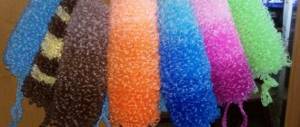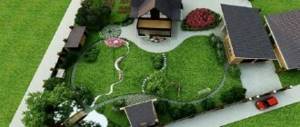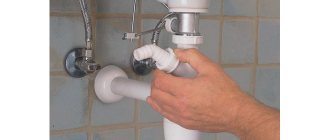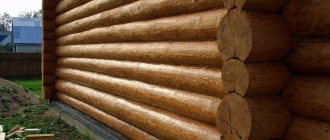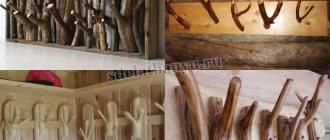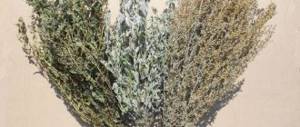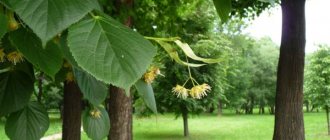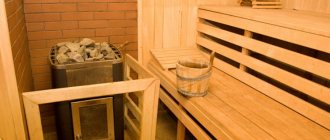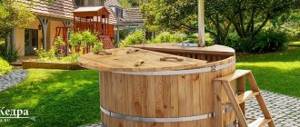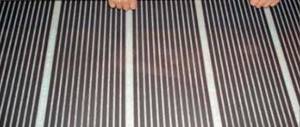Throughout my childhood I washed myself with a natural loofah washcloth! The most interesting thing about this is that I had no idea that it was a loofah! Its interesting shape, fibrous, porous structure did not in any way lead me to believe that it was a dried fruit!
Having grown up, I wondered where the raw materials for this natural washcloth come from... My surprise knew no bounds, honestly! So what is a loofah?
In common parlance, it is customary to write the word loofah with one letter f. However, the name is correctly spelled with two letters f, that is, luffa!
What is loofah: botanical description of the plant
Loofah is the seed pod of a fibrous plant. is a representative of liana-like plants, with shoots up to 4-7 m in length. All of them have branched antennae and roughness along the ribs. The leaves are palmate-five-lobed (sometimes whole) and arranged alternately. In outline, the leaf plates resemble a heart with a diameter of 15-27 cm and teeth located along the edges. All of them evaporate quite a lot of moisture, so the plant needs regular watering.
Loofah fruits ripen late, in our area it will be in October, we pick the fruits before frost.
Quite large loofah flowers are monoecious, dioecious, painted white or yellow. Staminate varieties are collected in racemes, while pistillate varieties are distinguished by a solitary arrangement. The flowering of the plant can be observed starting in June.
The green, corrugated fruits of the plant resemble spindle-shaped “cucumbers”, the length of which is about 50 cm, with a diameter of 7-12 cm. Immediately after ripening, they begin to dry out, and sclerenchyma fibers develop in them. The seeds of such “cucumbers” are ovoid in shape and have a marginal border. The length of the seed can reach up to 1.2 cm. Full ripening of the fruit is observed towards the end of summer. The rhizome of the vine is weak and is located in the surface layer of the soil.
The luffa plant is a cucurbit, a group of plants that includes pumpkins, gourds, and cucumbers. Grows as a flowering annual vine. Pollinated flowers produce cylindrical green fruits that eventually develop into a seed pod filled with many intertwined cellulose fibers.
Sea sponges are members of the animal kingdom. They grow on the seabed and filter food from the water. The word "sponge" is often used to describe loofahs and artificial "sponges" with absorbent properties, such as sea sponges.
In India and Iraq, this herb is actively used by local healers to treat many diseases.
Luffa sponge gourd has many names, both common and scientific. They are known as loofah, smooth loofah, loofah, sponge, loofah, loofah, loofah, loofah, loofah, sponge gourd, Chinese okra, elephant okra, pumpkin gourd, doily gourd, and other common names in many different languages. The scientific name of the plant is Luffa aegyptiaca. It may also be known as Luffa cylindrica.
There are other cultivated fiber-producing species in the genus Luffa, including Luffa acutangula and Luffa operculata .
Angled loofah or ribbed loofah are common names for acutangula. Luffa operculata is known as luffa ball or biscuit cucumber. People have propagated these cultivated plants across tropical and temperate regions of the earth.
Types of luffa
For a long time, the loofah was classified as a member of the cucumber genus. Then it was separated into a separate genus of annual plants of the pumpkin family, which includes about 50 species. It came to Russia from the countries of the East (India, Japan, China, Iran, etc.), where it is still actively grown. Because of its love for warmth and sun, loofah grows well in the Caucasus, Crimea, Krasnodar Territory and Central Asia. But they also tame it in central Russia.
Two types of plants are cultivated as vegetables:
- Luffa cylindrica - cylindrical luffa.
- Luffa acutangula - sharp-ribbed luffa;
The first of them is distinguished by large cylindrical fruits (up to 70 cm in length and up to 15 cm in thickness), pointed near the stalk, and a love of warmth. But the second type is not so delicate and tolerates weather changes better. Its ribbed fruits are slightly smaller (up to 40–50 cm). The remaining species have such small fruits that it is impractical to grow them for practical purposes.
Sharp-ribbed loofah (Luffa acutangula)
They are grown for their young unripe fruits, which are used as food. This variety is represented by an annual vine, reaching a length of 3-6 meters. The pentagonal stems have rough edges and are fixed to the support with the help of branched tendrils.
The leaf blades reach 20 cm in diameter, in most cases they are 5-7-angled or divided into several separate blades. The leaves are attached to the stem by means of fairly long petioles - about 8-12 cm each. All flowers of the plant are heterosexual and can have five 2-centimeter petals of pale yellow color.
Sharp-ribbed loofah (Luffa acutangula).
Staminate species form racemose inflorescences, 17-20 pieces each, while pistillate species are solitary and are found in the axils of the same leaves as the staminate ones. The fruits of the sharp-ribbed luffa are club-shaped and reach half a meter in length, with a diameter of 6-10 cm.
On a note! The flowers bloom only at night, so they are pollinated exclusively by nocturnal insects. The growing season for l. sharp-ribbed is quite short, and the species itself is undemanding to climate and soil, and is practically not susceptible to fungal diseases.
The taste of young specimens is reminiscent of cucumber, except that the pulp is sweeter. As soon as the fruits are completely dry, they are no longer suitable for food, but under the skin there remains a fibrous sponge created by intertwined conductive bundles. The seeds inside are ovoid and reach a centimeter in length. When ripe, the fruits are yellowish-black or completely black.
The green corrugated fruit dries completely after flowering and ripening.
Ripe fruits are unsuitable for eating because they have a strong bitterness. In cooking, other parts of the plant are also often used: buds, leaves, shoots and even flowers, and all that is needed to get a tasty side dish is simply stew them or season with oil.
Cylindrical loofah (Luffa cylindrica)
Cylindrical loofah is almost the same liana-like plant as the previous variety, but its length is slightly longer. The yellow flowers are just as large, and the unripe young “cucumbers” are an ideal ingredient for many dishes.
They reach a length of 60-70 cm, which is almost twice as long as the sharp-ribbed variety. As soon as the peel on the fruits turns yellow, they can be removed and begin to peel, extracting the fibrous pulp itself.
Cylindrical loofah (Luffa cylindrica).
The cylindrical variety of the “mad cucumber” is more suitable for making washcloths, although they do not disdain the plant in cooking: in addition to the fruits themselves, they use leaves rich in carotene (its content here is almost 1.5 times higher than that of such popular vegetables as carrots and sweet bell pepper).
general characteristics
Few residents of northern latitudes are familiar with this amazing vine. Luffa is native to West Africa and North-West India. In nature you can find about 50 varieties of this plant. Like most tropical species, it can be successfully grown in the middle and even northern regions of Russia. To do this, it is enough to get acquainted with the planting and care techniques and, of course, try to follow everything carefully.
Morphological description
Luffa loofah is a herbaceous annual vine, the closest relative of our zucchini and cucumbers. The length of the whip-like stems with tendrils can reach 6 meters. The leaves are large (about 20 cm), palmate, sometimes there are vines with a whole edge of the leaf blade. The plant is dioecious; each specimen bears both pistillate (female) and staminate (male) flowers. Pistillate flowers are arranged singly, while staminate flowers are collected in small racemes. The flowers are quite large, often yellow in color, similar in shape to cucumber and pumpkin flowers.
In place of the female flower, an elongated fruit is formed, reaching 70 cm in length. The unripe fruit has tender white flesh under the skin. In its mature state, it acquires a reticulated fibrous structure, in the middle part of which oblong large seeds (about 1.5 cm) of black color ripen.
The root system is poorly developed and is located in the upper layers of the soil.
Properties and uses
The use of different parts of the loofah plant is based on the characteristics of its chemical composition and physical properties. Luffa has a wide range of uses, from cooking to military uniforms:
- The carotene content in the leaves of the plant is one and a half times higher than that of carrots or peppers. The young fruits have a wonderful taste and are prepared in the same way as zucchini and eaten raw. In addition, they are included in recipes for various soups, salads, and curry sauce. Other parts of the luffa are also used as a side dish, lightly stewed and seasoned with oil: buds, flowers, leaves and shoots.
- The green parts of luffa are rich in iron and vitamin C. The Japanese use luffa juice to make expensive lipsticks and cleansing lotions.
- The seeds contain about 40% protein and 45% edible oil. Luffa oil is used in cosmetology; it is included in various creams, masks and other products.
- The fibrous and porous structure of overripe fruits provides good noise insulation and filtration qualities. In the 20th century, the US Army used them in the manufacture of steel soldier helmets and armored vehicle bodies, as well as fuel filters for engines.
- Man has long learned to make washcloths from ripe luffa fruits. This natural helper has serious advantages over synthetic analogues. It perfectly cleanses and massages the skin, has an anti-cellulite effect and improves blood circulation.
- The luffa plant has also found use in folk medicine. Fruit porridge with rice helps cleanse the lungs and get rid of a lingering cough. The high fiber content helps intestinal function and is useful for bloating and flatulence. Dishes using luffa have an antipyretic effect and stimulate lactation. Homeopathic medicine uses the plant for rhinitis and various types of allergies. Decoctions of roots and stems have a hemostatic effect and are used for internal bleeding. Luffa juice is used in the treatment of conjunctivitis and anemia.
Features of growing loofah: planting and care in open ground
Despite the fact that many gardeners talk about the specifics of growing loofah, it can be planted in almost any area, both in open soil and in a greenhouse.
When choosing a place on a site to grow such an unusual cucumber, you should pay attention only to well-lit and protected from the wind areas with fertile soil and sufficiently deep groundwater. Loofah loves the sun very much, which means a lack of sunlight will lead to limited plant growth and a less abundant harvest.
When planting loofah, it is worth considering that it is classified as a liana plant. If it is not provided with support or trellises in time, it will be forced to crawl on the ground, which leads to rotting of the fruits.
To successfully grow luffa, it is necessary to use a support structure to guide and support the stems.
In warm regions, luffa is planted directly into the ground in April, but in the middle zone there is a significant risk of unexpected frosts. Therefore, it is better to treat it like cucumbers: in mid-spring (April 15–20), sow seedlings.
On a note! Luffa does not like transplanting very much, so it can be grown in peat pots. The containers should be small, about 7 cm in diameter.
Before sowing, it is recommended to soak the black or white seeds of the plant, similar to watermelon seeds, and hold them at a temperature of +25 ... +27 degrees until they hatch.
Luffa fruits are shaped like zucchini, elongated, cylindrical, dry and fibrous inside, with many seeds.
The seeds are planted to a depth of about 2 cm, the crops are well watered and covered with plastic wrap. Luffa seedlings are grown at a temperature of about +30°C. Shoots should appear already on the 7-10th day, after which the temperature must be reduced to +20°C. Before planting seedlings in open ground, they need to be watered twice with mullein diluted with water (1:10).
Growing seedlings
Many summer residents are wondering how to plant and grow luffa (loofah). The answer lies in the biological characteristics of this plant. It has a fairly long growing season, so the process usually begins with germination of seedlings.
- Since luffa seeds are very hard and covered with a thick shell, they need to be prepared for planting. To do this, about a week before work, they need to be placed in a very warm place, with an air temperature of at least 40 degrees.
- Then they need to be soaked in aloe juice for 20-30 minutes.
- You need to start growing seedlings in early April so that the fruits have time to ripen before the onset of winter cold.
- The soil must be nutritious and loose, in order to avoid the occurrence of bacterial diseases, it should be disinfected.
- The first shoots should appear 5-6 days after sowing.
- In order for the luffa (loofah) to receive as many nutrients as possible, when growing seedlings it needs to be watered twice with mullein diluted in water in a ratio of one to ten.
Planting loofah seedlings in open ground
When the night temperature exceeds +15°C (around the beginning of May), pre-hardened seedlings can be planted in open ground. Luffa loves light, fertile soil - fertilized, well-cultivated sandy loam, and thrives in sunny, sheltered from the wind places (the plant is extremely light-loving and sensitive to cold). When planting on 1 m², it is necessary to add 5-6 kg of manure, 20 g of potassium sulfate, 50 g of superphosphate and 40 g of ammonium nitrate, and the nitrate must be applied in 3 doses: at the time of planting seedlings, during the second and third loosening.
Luffa seedlings are grown like cucumber and watermelon seedlings - the seeds are sown in cups or peat pots 30-40 days before planting in open ground.
It is necessary to place the seedlings in the garden bed with a sufficiently large gap - about 1 m; when planting, the plants need to be buried down to the cotyledon leaves. When planting seeds directly into open soil (more suitable for growing loofah for gastronomic purposes), you need to organize holes in advance measuring 30x30 cm and deep 25 cm, filling them halfway with cow dung mixed with soil. The seeds are placed in this mixture, sprinkled with the remaining soil.
Note! The seedling method is much more profitable than the seed method, because by planting the loofah in pots in advance, you get not only an early, but also a very rich harvest.
Agricultural technology for wet production
The famous money-grubber, Father Fyodor Vostrikov from the immortal work “The Twelve Chairs,” dreamed of a candle factory near Samara, which would help him spend the rest of his days in prosperity and luxury in his own house with servants. Who knows, maybe for someone opening their own basting production will be the beginning of the path to great success.
The key advantage of this plant is that its well-ripened fruits make excellent natural washcloths. They gently and delicately cleanse the skin of keratinized epidermis, relieve inflammatory processes on the surface of the skin, and are an absolute hypoallergen. In general, the use of such a washcloth is a kind of symbiosis of a soft scrub and a delicate superficial massage.
The technology for growing this plant is similar to the methods of agricultural technology for melons, in particular cucumbers. For planting, it is necessary to allocate well-drained fertile areas illuminated by the sun. Trellis should be recognized as a rational method of placement. It is in this way that it will be possible to achieve uniform illumination of plants and avoid thickening, in which the level of fruiting is reduced to 30%, and the fruits become smaller by almost half. By the way, about productivity. On 1 acre you can rationally place 30 plants, from the fruits of which you can make about 900 washcloths. Considering the cost of one washcloth in a retail chain, you can fairly accurately predict expected income. The main agricultural practices are as follows:
- One of the zoned varieties for the southern regions of the country should be recognized as the “Cylindrical” variety;
- Direct sowing of seeds into the soil is associated with the risk of late frosts, so preference should be given to growing through seedlings. It is sown in peat pots in March and the ambient temperature is maintained within 24-28 degrees Celsius. The seedlings are watered abundantly, not forgetting that air humidity for pumpkin plants is a very important factor for the successful growth and proper development of seedlings;
- When the first natural leaf appears, the temperature is reduced by 3 degrees Celsius;
- Seedlings at 6 weeks of age can be hardened off;
- Planting is carried out in southern, well-lit areas, when the danger of night and morning frosts has passed;
- Due to the shallow root system of this plant, you should immediately take care of the presence of support for the stem;
- The distance between adjacent roots should be at least 150 - 170 cm;
- When the central stem reaches a length of 500 cm, it must be pinched and thereby provoke the development of lateral shoots and increase the yield;
- During the growing season, young shoots and leaves can be removed without creating zones of local thickening.
Attention! Young leaves and shoots should not be thrown away as they are an excellent base for an effective skin care product. The green mass is finely chopped, 100 g. leaves and shoots add 5 drops of unrefined olive oil, 10 g. flower honey. The mass mixes well and is applied to the skin for 10 minutes, after which it is washed off with warm water.
For clarity and understanding of the principles of basic agrotechnical practices, we will form them in the form of a table:
| Name of agrotechnical technique or operation | Its general characteristics |
| Growing and forming a central shoot. | No more than 500 cm. The crown is pinched in the classic way. |
| Growing and forming side shoots | Shoots from the axils of 5-6 leaves are left 50-70 cm long and pinched. |
How to care for a loofah outdoors
Caring for planted plants is not very difficult, and you will only need to perform a few regular procedures:
- watering - 1-2 times a week;
- loosening - a few hours after watering;
- removal of weeds - in the process of loosening.
Watering : Luffa leaves evaporate a lot of moisture, while the root system is relatively weak and is located in the surface layer of soil, so the vine needs frequent watering. Luffa also loves moist air, so it is better to water it with a hose with a special sprayer. In May, when the plant is relatively small, it is enough to water it once every seven days, from June to mid-September - once every three days. From the second half of September, watering should be reduced, this will speed up the ripening of fruits.
The best predecessors of luffa are legumes and green crops.
Fertilizing : luffa grows a large leaf mass and produces quite a lot of fruit, so it needs a fairly large amount of fertilizer. At least 2 times a month it must be fed with a special nutrient solution: stir 1 kg of mullein and a glass of ash in a bucket of water.
To shorten the growing season, the main stem must be pinched at a distance of 3 m from the root. All deformed and late-appearing fruits must be removed, leaving only 7-8 pieces for the cylindrical luffa, and 11-12 pieces for the luffa. sharp-ribbed.
To get the largest loofah fruits, the number of ovaries on the plant must be limited: for cylindrical luffa - 3-5 pieces, for l. sharp ribbed - 6–8 pcs.
In order for the pumpkins to be large, you need to leave 3-8 fruits on one plant and tear off the remaining ovaries.
How and when to harvest luffa
The specific timing of harvesting loofah fruits directly depends on the purpose of its cultivation. If you are interested in using “mad cucumbers” in cooking, then you need to pick them while they are still green, around mid-to-late August, at a length of 10-15 cm.
After lying for a while, they will become an excellent raw material for further processing into canned food or simple stewing. However, if the plant is grown to produce a good sponge, then you will have to leave the fruits on the bushes longer so that as much moisture as possible is removed from the pulp.
You can also cut them at the end of the growing season (at the end of September) and hang them in a dry and warm room so that they do not touch each other, otherwise rotting may begin from the dents. To obtain soft washcloths, the “ripening” period at home is slightly reduced.
On a note! If you are going to continue to grow loofah on your plot, using the seeds obtained last year, then it is better to cut off the unripe fruits, in which the hole at the end is still tightly closed.
Ripe fruits have a rough, rough skin, and inside, when shaken, the rustling of the seeds can be heard.
When grown in warm climates, loofah is considered fully ripe when the skin on the fruit turns yellow and the fruit dries out quickly. In cooler areas, it is recommended to remove the “cucumbers” while they are still green and, after drying in a warm room, begin to peel them.
How to make a loofah from luffa fruit
In order to turn a huge fruit into a wonderful bath attribute, you need to know some subtleties.
Only from ripe fruits can you make a sponge, that is, the pulp inside must dry. The color of the fruit will help you find out the exact time; when it turns brown, the time has come! And, of course, don’t forget about the dry tip at the end.
If the fruits have not had time to ripen (for example, you are unlucky with the weather), then they can be collected green and dried in a warm, dry room.
In order to obtain the skeleton of a loofah without much difficulty, you must first work with the fruit. Some summer residents recommend soaking the luffa skin for several days in water to soften it. But, there is a more practical way:
Dip the dry fruit in boiling water for 10-15 minutes, then cool and the skin is easy to peel. Once you get your future loofah, hold the fibers up to the light. Surprisingly many seeds, right!?
You also need to get rid of the seeds; this can be done in two ways - picking them out or putting a washcloth in water. The seeds should come out of the fibers on their own.
Once you have a real luffa sponge in your hands, rinse it in a soapy solution, then in clean water and let it dry in free air. Now it's time for your imagination! You can cover the luffa with soft fabric, cut it into convenient pieces, make double-sided washcloths - in general, whatever you want!
Useful properties of loofah
Like many other plants, luffa is not yet recognized by official medicine, but its use will still be appropriate in a number of cases. As we just mentioned, fruits contain fiber that is beneficial for the human body, in addition to which it is worth highlighting such important components as triterpenoids, pectins and carotene.
Cucumber juice is used to treat conjunctivitis and some dermatological problems, especially those associated with increased oily skin. In addition, young fruits and even ovaries of Vietnamese pumpkin are useful in the treatment of anemia, ailments of the respiratory system, or simply for a general strengthening effect on the body.
Loofah juice is an excellent ingredient for creating medicines for joint diseases or infusions against nasal diseases. The gruel from the “mad cucumber” helps eliminate coughs and reduce body temperature, which is why it is often used by Eastern healers.
In addition, the vegetable will be no less useful for nursing women, as it helps increase milk production while eliminating possible problems with the digestive system. This list of benefits can be continued for a long time, but it is clear that loofah is indeed a very valuable vegetable.
Plant care
Many people are interested in such a plant as luffa. How to make a washcloth? To make a bath accessory, you first need to grow high-quality fruits.
Luffa leaves absorb a huge amount of moisture, so you need to carefully ensure that the soil does not dry out and the plant has constant access to the necessary nutrients. Water for irrigation must be warm, otherwise the luffa may die. Experienced gardeners also recommend spraying the vine itself once every two weeks or using a sprinkler.
As soon as the first mature ovaries are formed, you need to select 3-5 of the strongest ones, the rest need to be plucked out. In order for nutrients to reach the fruit, it is better to remove the side branches, the same applies to excess green mass.
Luffa, like any other plant, requires a large amount of oxygen, so the soil needs to be loosened three times a season, given the shallow root system, this procedure must be carried out very carefully.
Pollination - initially only female flowers are formed, male flowers begin to appear only after 10-12 days. Given the nature of the plant, it is almost impossible to pollinate it with the help of insects; the most reliable way is to use the manual method. It will be possible to find out whether the work was carried out successfully or not in a few days; the pollinated ovaries increase significantly in size.
Use of loofah in cooking and medicine
Loofah is widely used in various areas of human activity: from cooking to cosmetology, and almost everywhere it simply has no equal. Let's consider the benefits of its use in each of them.
Unripe loofah fruits have a very pleasant and delicate taste, reminiscent of a mixture of cucumber and zucchini, and in addition to this, a very fresh smell can be noted. The dense and thick peel is always peeled, since it is unsuitable for food. The flowers and buds of the types of loofah described above are excellent for making salads: they are very crispy, with original flavor and aromatic notes. When using the leaves of the plant for these purposes, one should not forget about their bitter taste.
Young, unripe fruits are eaten and folk medicinal potions are prepared.
Young “cucumbers” can be eaten either raw or subjected to heat treatment: stewed, fried, boiled and even stuffed or pickled. Vietnamese pumpkin is also suitable for use in raw salads instead of cucumber. Important! To prepare various dishes, it is better to choose fruits up to 15 cm in length, since they are most often the sweetest and most delicious. With proper culinary processing, loofah can easily turn into a good side dish for meat or fish, and this applies to both fruits and shoots, buds and flowers.
In addition, “mad cucumbers” are great for preparing first courses or vegetable stews, and the pulp will be an excellent addition to omelettes. For those who do not like to spend a lot of time in the kitchen, there are simpler options for preparing loofah: its fruits can simply be fried in olive oil, using cayenne pepper and soy sauce. With a little more effort, you can prepare stuffed vegetables with the addition of rice or meat, and in China, loofah with pork and mushrooms is especially appreciated. In a word, the plant can be combined with almost any product, but options using soy sauce, olive oil, garlic, pepper, ginger, cumin, seafood, beans, rice and rice noodles will be especially successful. The yellow flowers make a nice fresh salad, and the seeds can be roasted.
Liana giving washcloths
Loofah, or correctly luffa, is an annual plant from the pumpkin family, whose natural habitat is the subtropical and tropical regions of Asia and Africa. Herbaceous vines of this kind grow very quickly and by the end of the growing season can reach a length of up to 500 cm. Luffa, under natural conditions, bears fruit quite abundantly, and the fruits can reach an impressive length of 70 cm. Moreover, they can be eaten while the fruits are have not completely ripened, have not become mealy and have not become coarse.
In addition to fruits, young shoots are used for various cosmetic purposes, and the plant itself is perfect for shading summer gazebos, barbecue areas and other outdoor living spaces. Due to the fact that our climate has become much hotter, there is a chance to successfully grow loofah in the climatic conditions of the southern regions of our country.
The healing properties of loofah
From a medical point of view, loofah will be useful not only for people, but also for animals, due to which it can be successfully used by veterinarians. However, it is used little in this direction, while it serves much more for human health. In particular, the fruits, leaves and ovaries of the plant are used in the following cases:
- for anemia and anemia (infusions and decoctions of young ovaries are used);
- for constipation and kidney problems (fresh fruits, which have a laxative and diuretic effect on the body, are perfect for creating medicines);
- in the treatment of jaundice (plant juice obtained from bitter luffa through tissue would be appropriate);
- for sexually transmitted diseases (preparation of infusions based on the fruits and seeds of the plant is useful);
- for diseases of a dermatological nature (seed oil is especially useful);
- for cosmetic problems and childhood conjunctivitis (the affected areas are wiped with juice diluted in water and the eyes are washed, and special masks are prepared to improve the appearance of the skin);
- at elevated temperatures, as an antipyretic;
- to accelerate the healing of ulcers and mechanical damage to the skin.
A loofah is a sponge, similar to a washcloth, made from the fibrous mass of a special type of gourd.
Loofah is a natural, environmentally friendly product. The use of loofah effectively affects the human body, has a massage effect, activates the process of cellular renewal of the skin, and enhances microcirculation.
With regular massage (both with and without soap), the skin becomes elastic and silky. Loofah can be successfully used for anti-cellulite massage. It is very well accepted by the skin, moisturizes it, increases elasticity.
How to make loofah soap
What's really good for your skin is exfoliation. Some of you have probably already tried using natural scrubs to deep cleanse your skin as an additive to soap. One of the most popular natural scrubs is loofah. Loofah can be used to add to soap made from soap base. It can be used either whole, in plates or crushed.
It is used in soap as a scrub - it opens pores, removes a layer of old skin cells, and fights cellulite.
To make soap you will need:
- About 1.5 kg clear soap base
- Soap mold
- A long piece of clean and dry loofah
- Flavors and dyes
How to cook:
- Take a dry and clean soap mold. Lubricate it with vegetable oil - this will make it easier to later remove the finished soap from it.
- If the size of the loofah does not correspond to the size of the mold, then cut off the loofah that is too long, and fill the too short one with a piece of another loofah of the required size. If the loofah is too large in diameter, you can cut it lengthwise (to make two semicircles) and put in half.
- Place the soap base cut into pieces to melt in the microwave for a couple of minutes. Then take it out, stir and put it back in the microwave until completely melted. Try to prevent the soap mass from boiling. If this happens, it may lose transparency and plasticity.
- Add dye to achieve desired color.
- Add flavoring.
- Add various healthy ingredients as desired.
- Slowly pour the prepared soap mass up to half the mold, then hit the bottom of the mold several times on the table. This will help get rid of any air bubbles that may remain in the soap mass. After this, fill the mold to the end. Leave the pan for about a couple of hours until completely cooled.
- After the soap has cooled completely, it can be removed from the mold. To make this easier, put it in the freezer for 15 minutes.
- Use a sharp serrated knife to cut the loofah soap.
- Your soap is ready!
There are different types of loofah - some are firmer, others are softer. Some are best used for washing in the shower, while others are preferable for washing hands. If the loofah is too hard, this is not a reason to refuse to use it in making soap. There are several ways to make the effect of loofah on your skin more gentle.
The first of them is as follows. Before pouring into the mold, it should be crushed and mixed with the soap base.
The second is that the loofah is initially much softer on the longitudinal (side) side than on the transverse side. Therefore, simply change the position of the loofah in the soap mass. Designed for the initial prevention of cellulite. Also, skin cleansed and prepared with a loofah absorbs vitamins much faster.
Note! The information presented in the article is for reference only; before use, it is recommended to test for individual reaction.
How does a luffa washcloth work on your skin?
Any natural washcloth is hard and luffa is no exception to this rule. The fiber dried, hardened and became a rigid material. Not sissies like to wash themselves with such a washcloth. Who wants to enjoy an excellent skin massage in addition to washing - this washcloth is just for you!
An excellent massage effect, deep cleansing of pores, natural peeling of the skin and maintaining its tone - this is what a loofah can offer you. Although this washcloth is particularly hard, it has a softer effect on steamed skin in a bath.
After washing, the skin becomes elastic and toned. When it comes to preventing the formation of cellulite, a loofah made from luffa ranks first!
